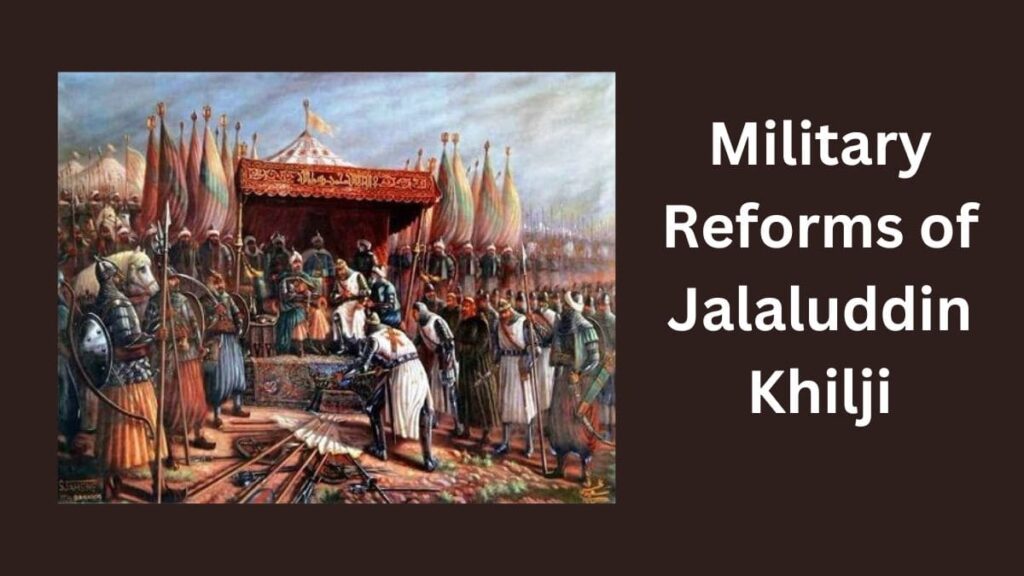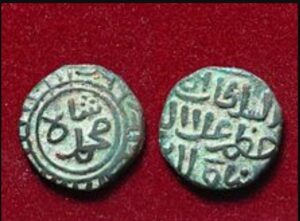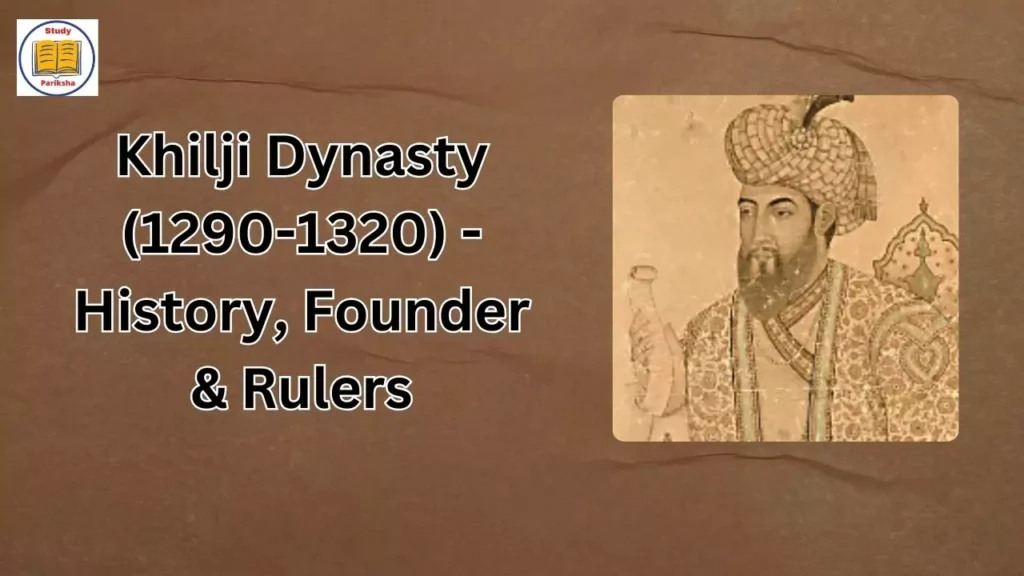Khilji Dynasty Notes
The Khalji Dynasty ruled the Delhi Sultanate from 1290 to 1320. They brought many military victories and built amazing structures. Their rise changed the power from Turk officials to others in charge. The Khalji Dynasty came after the Mamluk Dynasty.
The Mamluk Dynasty was also known as the Slave Dynasty. It was led by Turkish rulers such as Qutbuddin Aibak and Shamsuddin Iltutmish. Later, rulers like Raziya and Ghiyasuddin Balban took their place. The Khalji Dynasty was followed by the Tughlaq Dynasty.

Table of Contents
Key Takeaways
- The Khalji Dynasty ruled the Delhi Sultanate from 1290 to 1320.
- The Khalji Dynasty succeeded the Mamluk Dynasty and was eventually succeeded by the Tughlaq Dynasty.
- The rise of the Khalji Dynasty marked a decrease in the influence of Turk officials in the administration.
- The Khalji Dynasty was known for its military conquests and architectural achievements.
- The Khalji Dynasty’s rule was a significant period in medieval Indian history.
The Rise of the Khilji Dynasty
The Khilji Dynasty started with Jalal-ud-din Khalji leading from 1290 to 1296. He was known for his kind ways and called the “Saint ruler.” Despite his efforts for peace, he had to fight Sidi Maula’s fierce battles and dealt with the tough Ranthambore Fort. Hamir Dev ruled Ranthambore at that time.
The Decline of the Mamluk Dynasty
Jalal-ud-din Khalji faced more troubles from the Mongol army under Abdullah, who he treated as his own. Once these Mongols attacked, some stayed and became “New Muslims.” Khalji assigned his nephew, Alauddin Khalji, control over Haasi and Kada.
Jalal-ud-din Khalji: The First Ruler of Khilji Dynasty
Alauddin Khalji was eager to expand. He asked Jalal-ud-din for permission to attack Gujarat and Southern India. Alauddin Khalji then took matters into his own hands. He killed Jalal-ud-din Khalji in Kada and claimed the kingdom.
Alauddin Khalji’s Ascension to Power
When Alauddin Khalji became the new ruler, he faced many challenges. He needed to win over rulers who had gained freedom before. To win their trust and fight the Mongol threat, Alauddin Khalji made sure the people were happy by sharing wealth. This move helped him build a strong army and control his kingdom.
Alauddin Khalji: The Most Powerful Ruler
Alauddin Khalji ruled the Delhi Sultanate from 1296 to 1316. He was a powerful ruler of the Khilji Dynasty. His reign showed his strength and influence. He had to win the trust of provincial rulers who had gained independence earlier. This was due to the softer policies of his predecessor, Jalal-ud-din Khalji.
Khalji also faced a Mongol threat that had a strong army. To keep his territory safe, he built a large army. He used wealth to gain the loyalty of the people in Delhi, strengthening his rule.
Military Conquests in Northern India
Khalji expanded his kingdom by adding regions like Gujarat, Ranthambore, and Chittor. His conquests made the Delhi Sultanate even stronger.
Invasions in Southern India
He was the first Sultan to attack South India. His forces took cities such as Warangal and Devagiri. This helped the Delhi Sultanate grow and become richer.
Confronting the Mongol Threat
Khalji defended against the Mongols over 12 times. His victories showed his military and diplomatic skills. This made the Delhi Sultanate safer from external threats.

Domestic Policies and Reforms
During his rule, Alauddin Khalji made many important changes that greatly affected the Delhi Sultanate. He strongly believed in a king’s right to rule absolutely. This belief influenced his decisions and policies a lot.
The Divine Right Theory of Kingship
Alauddin Khalji’s faith in the Divine Right Theory helped him strengthen his rule. It gave him the okay to make big changes without a lot of pushback. This meant he could do things to make his power stronger.
Four Ordinances to Prevent Revolts
Alauddin Khalji set up four laws to stop revolts against him. They included taking back land grants, making a stronger spy network, stopping certain gatherings and alcohol, and creating a steady army. These steps aimed to weaken the nobles’ power and keep the common people under control.
Revenue Collection and Market Regulation
Extensively, Alauddin Khalji changed how land taxes were paid and put a more money-focused system in place. This marked a shift from older ways of payment. He also taxed Hindus separately and collected taxes like Jizya, a land tax, and a home tax from them.
In the markets, he appointed market officers to keep an eye on prices and stop unfair trading. Separate markets were set up for different goods to make everything run smoothly.
| Domestic Policies and Reforms Under Alauddin Khalji |
|---|
| Adherence to the Divine Right Theory of Kingship |
| Four Ordinances to Prevent Revolts: |
| 1. Impounding pious and free land grants |
| 2. Restructuring the spy system |
| 3. Banning social parties and wine |
| 4. Establishing a permanent standing army |
| Cash-based Land Revenue Collection |
| Discriminatory Policies towards Hindus (Jizya, Grazing Tax, House Tax) |
| Market Regulation: Diwan-i-riyasat, Separate Markets, Price Standardization |

Khilji Dynasty
The Khilji Dynasty ruled the Delhi Sultanate from 1290 to 1320. This time was important in the history of medieval India. It was led by Jalal-ud-din Khalji and later succeeded by the Tughlaq Dynasty. The Khiljis were famous for their military might, building works, and strong rules under Alauddin Khalji.
They ruled for almost thirty years. During this, they grew the lands of the Delhi Sultanate through wars. Alauddin Khalji, ruling from 1296 to 1316, led these victories. He took over many places, like Rajputana and parts of Gujarat. He also attacked Deogiri in 1296.
The Khiljis are remembered for their great buildings. Alauddin Khalji had many structures built in Delhi. Some examples are the Alai Darwaza gate, the Palace of a Thousand Pillars, and the Fort of Siri.
But the Khilji Dynasty weakened after Alauddin’s rule. This led to its end in 1320. Then, the Tughluq Dynasty began under Ghazi Malik, continuing the Delhi Sultanate.
| Duration of Rule | Military Exploits | Administrative Policies | Taxation Policies | Infrastructure Development | Successors and Decline |
|---|---|---|---|---|---|
| Jalal-ud-din Firoz Khilji: 1290-1296 A.D. Alauddin Khilji: 1296-1316 A.D. | Jalal-ud-din defeated the Mongols at Sunam in 1292 A.D. Alauddin Khilji’s generals conquered regions like Gujarat, Ranthambore, Malwa, Chittor, Dhar, and others. Alauddin Khilji successfully resisted Mongol invasions over 12 times. Malik Kafur defeated rulers like Prataprudra-II of Warangal and Ramachandra Deva. | Ala-ud-din introduced four ordinances to prevent revolts. He initiated a permanent standing army, branding of horses, and a detailed roster of soldiers. Price control measures were enforced on essential commodities. | Jizya, grazing tax, and house tax were imposed on the Hindu community. | Ala-ud-din constructed Alai Darwaza, Palace of a thousand pillars, and the Fort of Siri. | Ala-ud-din Khilji’s successors were weak rulers. Ghazi Malik led a group of nobles, overthrew the Khilji Dynasty, and established the Tughluq Dynasty in 1320 A.D. |
Architectural Achievements
The Khilji Dynasty stands out for its amazing buildings. Alauddin Khalji, a powerful ruler, built many great structures in Delhi. His constructions boosted the architectural heritage of medieval India.
The Alai Darwaza
In 1305, the Khilji Dynasty completed the Alai Darwaza. This building is an outstanding example of their architectural skills. It includes advanced arches, unique walling methods, and stunning decorations. The Alai Darwaza shows how skilled the Khilji rulers were in both art and engineering.
The Palace of a Thousand Pillars
The Palace of a Thousand Pillars was another of Alauddin Khalji’s projects. This massive palace highlighted the dynasty’s wish to build grand monuments. The palace was their way of leaving a lasting mark on the architecture of their time. It told of the greatness of the khilji dynasty.
The Fort of Siri
The Fort of Siri was built to keep out the Mongols. Alauddin Khalji ordered its construction to protect delhi monuments. This strong fort successfully defended the Khilji rulers’ architectural achievements during their rule.
The Successors of Alauddin Khalji
In 1316, Alauddin Khalji passed away. The rulers after him were not strong. Qutb-ud-din Mubarak Shah (1316-1320) and Nasir-ud-din Khusrav Shah (1320) were his notable successors. Sadly, they couldn’t lead well. Because of them, the Khilji Dynasty started to fall.
| Successor | Reign |
|---|---|
| Qutb-ud-din Mubarak Shah | 1316-1320 |
| Nasir-ud-din Khusrav Shah | 1320 |
The successors of Alauddin Khalji began the Khilji Dynasty‘s end. They couldn’t keep up what Alauddin Khalji built. This weakness led the Tughluq Dynasty to rise in 1320. It marked a new chapter for Delhi Sultanate.
The Decline and Fall of the Khilji Dynasty
The Khilji Dynasty weakened after Alauddin Khilji’s strong rule ended with his death in 1316. Following him, Qutb-ud-din Mubarak Shah and Nasir-ud-din Khusrav Shah ruled. Yet, they were not as effective. Their rule saw a decline in the dynasty’s power and stability.
The Rise of the Tughluq Dynasty
Ghazi Malik, Governor of Punjab, and several nobles took over Delhi in 1320. This action marked the beginning of the end for the Khilji Dynasty’s control. Ghazi Malik became ‘Ghiyas-ud-din Tughluq’ and started the Tughluq Dynasty, marking a new era.
With the Tughluq Dynasty’s rise, the rule of the Khilji Dynasty over the Delhi Sultanate ended. Their power had lasted from 1290 to 1320, almost three decades.
Cultural and Social Impact
The Khilji Dynasty made a big impact on medieval India’s culture and society. Alauddin Khalji targeted Hindus with discriminatory taxes and policies. This made life harder for Hindus under Islamic rule.
He enforced the Jizya and other taxes on non-Muslims. This way, Hindus were further marginalized. The Khilji Dynasty worked hard to show their power over the Hindu people, restricting their freedom in many ways.
Discriminatory Policies towards Hindus
Alauddin Khalji’s time focused on putting rules against Hindus. These rules showed the Dynasty’s aim to strengthen Islamic rule. He charged Hindu farmers extra and imposed the Jizya, a special tax on non-Muslims.
All this made life tough for Hindus. It also helped the Islamic class maintain their power. The Khilji Dynasty’s actions were all about tightening their grip in the region.
Influence on Art and Literature
Despite the harsh rules against Hindus, the Khilji Dynasty supported the growth of art and literature. They built many famous buildings, including the Alai Darwaza and the Fort of Siri. These structures showed their love for art and culture.
Famous scholars and poets found a place in the Khilji Dynasty’s court. They added to the rich literary world of the time. The Khilji Dynasty’s reign was a mix of repression but also cultural growth.
The Khilji rule’s effects on medieval India were deep and diverse. They changed society by limiting Hindu’s lives but also encouraged art and literature. Their era was a complex mix of power and cultural development.
The Legacy of the Khilji Dynasty
The Khilji Dynasty had a big impact on the Delhi Sultanate and India’s history. They faced many controversies and challenges, but they also made many important contributions. Their military wins, beautiful buildings, and new laws shaped the country’s government and economy. This has helped the Khilji Dynasty be remembered.
This dynasty greatly expanded Islamic rule in India. Under their rule, the Delhi Sultanate grew to cover most of India. This made them extremely powerful and important during medieval times, except for the south and the Maldives.
The Khilji Dynasty is also known for its amazing architecture. The famous Alai Darwaza and Siri Fort in Delhi were built during their time. These buildings show the Khiljis were skilled in art and engineering. They added greatly to India’s architecture history.
They also changed how the government worked. Ala-ud-din Khalji made taxes centralized and set up a postal system and spies. He also controlled prices in the market and built storage for food. These changes made the government more effective and organized.
Despite facing many problems while in power, the Khilji Dynasty’s accomplishments are still remembered. Their military successes, building projects, and new laws had a big impact on India. They are still studied as important parts of medieval Indian history.
Significance in Indian History
The Khilji Dynasty’s time in the Delhi Sultanate was very important for India. They grew the Sultanate’s area through battles. This included northern and southern India. Their rule helped strengthen Islamic governance, setting the stage for later dynasties and the Mughal Empire.
Expansion of the Delhi Sultanate
The Khilji Dynasty notably made the Sultanate bigger. Alauddin Khalji, a strong ruler, led campaigns that added lands like Rajputana and Chittorgarh under their rule. This made the Sultanate more powerful and spread Islamic rule more widely in India.
Consolidation of Islamic Rule
Under the Khilji Dynasty, Islamic rule in India was made stronger. They fought off Mongol invasions and put policies in place to stop revolts. This work helped set up the Tughlaq Dynasty and the Mughal Empire, making their impact last longer in history.
Important Khilji Dynasty Notes For UPSC and SSC Exam
In this topic we will discuss about The Important rulers of Khilji Dynasty, First ruler of Khilji dynasty and The Alauddin Khilji Empire. This is the Second Dynasty after The Slave Dynasty which ruled on the Throne of Delhi.

Khilji Dynasty was a Turko-Afghan Dynasty which ruled on the Delhi sultanate Covering large parts of the Indian Subcontinent for nearly three decades between 1290 to 1320 AD. This Dynasty was founded by Jalaluddin Firuz Khilji as the second dynasty to rule the Delhi Sultanate of india.
A group of Khilji Nobles led by Jalaluddin Khilji overthrew the Incompetent Successors of Balban in 1290 AD. The Khilji rebellion was welcomed by the Non Turkish Nobility. The khilji did not exclude the Turks from High offices but ended the Turkish Monopoly.
Important Rulers of Khilji Dynasty
1. Jalaluddin Firuz Khilji ( The First Ruler of Khilji Dynasty ) 1290-1296 AD
Jalaluddin Khilji was the Founder of Khilji Dynasty and the first Ruler of Khilji Dynasty to ruled the Delhi Sultanate from 1290-1296 AD. His original name was Firuz. Jalaluddin started his career as an officer in Mamluk Dynasty and rose to an important position under Sultan Muizzuddin Qaiqabad.
Jalaluddin ascended the throne of Delhi in 1290 AD as the first ruler of Khilji Dynasty at the Unfinished Kilokhri palace near Delhi. At the Time of his ascension Jalaluddin was very unpopular among people. He had little support among the Turkish Nobles who viewed him as an Afghan ( Pashtun ).
- He was the First Ruler of the Delhi Sultanate to clearly put forward the view that the state should be based on the willing support of the governed, and since the large majority of People in India were Hindus, The state in India could not be Truly Islamic State.
- He adopted the Policy of tolerance and avoiding Harsh Punishment.
- The most Important aspect of His reign was the Invasion of Devagiri In 1294 AD, By his Nephew and Son in law Alauddin Khilji.
- He married his daughter to Ulugh Khan a descendant of Chenghiz khan to win his Goodwill.
Early Life of Jalaluddin Khilji
Jalal-ud-din Khilji was born in 1259 in the city of Khilat, which is now in Afghanistan. His father, Shihab-ud-din Mas’ud, was a commander in the army of the Mamluk Sultanate of Delhi. Jalal-ud-din Khilji received military training from his father and gained a reputation for his valor and courage.
Ascension to the Throne
In 1290, Jalal-ud-din Khilji overthrew the last ruler of the Mamluk Dynasty, Qaiqabad. He came to power at the age of thirty-one and was known for his benevolent and just rule. He made significant efforts to promote agriculture and trade and ensured that his subjects were well taken care of.
Military Reforms of Jalaluddin Khilji

Jalal-ud-din Khilji introduced significant reforms in the military to strengthen his kingdom’s defenses. He appointed capable and trustworthy officers to important positions and established a system of spies to keep a check on the activities of his officials. He also encouraged the recruitment of soldiers from all castes and religions, which helped to build a diverse and loyal army. He also made significant efforts to improve the cavalry, which was the backbone of the army.
Administrative Reforms of Jalaluddin Khilji
Jalal-ud-din Khilji introduced several administrative reforms to improve governance and ensure that his subjects were well taken care of. He established a new department, the Diwan-i-Khairat, which was responsible for providing relief to the poor and destitute. He also introduced a system of weights and measures to regulate trade and commerce. He appointed capable and trustworthy officials to important positions and established a system of justice to ensure that his subjects received justice.
Promotion of Agriculture and Trade
Jalal-ud-din Khilji made significant efforts to promote agriculture and trade, which were the mainstays of his kingdom’s economy. He encouraged the cultivation of crops such as wheat, barley, and cotton and established a system of irrigation to improve agricultural productivity. He also encouraged the development of trade and commerce and established a system of trade fairs and markets to promote trade.
2. Alauddin Khilji ( Other Name Ali Gurshasp ) 1296-1316 AD
Alauddin Khilji was the Nephew and Son-in-law of Sultan Jalaluddin Khilji. When Jalaluddin became the Sultan of Delhi. After Deposing the Mamluk, Alauddin was given the position of Amir-i-Tuzuk ( Master of Ceremonies ). Alauddin Khilji obtained the Governorship of Kara in 1291 AD after Suppressing a revolt against Jalaluddin Khilji.
In 1296 AD Alauddin Khilji raided Devagiri and acquired loot to stage a successful revolt against Jalaluddin Khilji.
- He came to teh throne by murdering his uncle and father in law Jalaluddin Khilji.
- He proclaimed Himself as Sultan winning over the Nobles and Soldiers to his side by the lavish use of Gold.
- He Massacred the rebellious Nobles Relatives, Family Members and the Mongols Who had settled in Delhi. Alauddin gave harsh Punishment even to the wives an children of all nobles.
- Alauddin framed a Series of Regulations to prevent the nobles From conspiring against him. They were forbidden to hold Banquets of Festivals or to form Marriage alliances Without the permission of the Sultan.
- To discourage the Festival parties he banned the use of wines and intoxicants. He also Instituted a Spy service to keep himself Informed of all that the Nobles said and did.
- He firstly conquered Gujarat and Married Raja’s Wife Kamla Devi. He Acquired Malik Kafur from there. Then he captured Ranthambhore, Chittor and Malwa.
- Malik Kafur was Sent towards South to Expand the territory.
- He defeated Yadava King of Devagiri. He is said to have reached as far as Rameshwaram where he built a Mosque.
- Alauddin Strengthened the North west Frontier under his trusted Commander Ghazi Malik.

Administrative Reforms Of Alauddin Khilji Empire
- First Sultan to have a Permanent Army . He paid Soldiers In cash.
- In order to avoid the problems created by the Nobles, Alauddin issued Four Important ordinances.
- Confiscation of Religious endowments and free grants of lands, Reorganised the spy System, Prohibited the use of Wine and Intoxicants.
- Laid down that the Nobles should not have social Gatherings and they should not inter Marry without his permission.
- He introduced the System of Dagh or Branding the Horses and Chehra or detailed description of each soldier.
Revenue Reforms of Alauddin Khilji Empire
- Measured the Cultivable land and fixed the land revenue. Bishwa was declared to be the Standard of Measurement.
- The state demanded the Half of the produce.
- The post of Special Official called Mustakharaj was created for the purpose of collection of revenue.
- Alauddin is credited to have built many forts, and the most important of them is Alai Fort.
- He also constructed the Alai darwaza the Entrance gate of the Qutub Minar.
- He also built the Palace of thousand pillars called ‘ Hazar Situn ‘. Hauz khas and jamait khana Mosque and built his capital at siri. He adopted the Title Sikandar-i-Sahni
- He was the first Turkish Sultan who separated religion from Politics. He proclaimed kingship Knows no Kingship.
- He Patronised many Great poets in his court like Amir Khusro and Mir Hasan Dehlvi.
Successors of Alauddin Khilji
After the death of Alauddin Khilji in 1316 AD Malik Kafur seized the throne, but he could not rule for long and nominated Shiabuddin ( Alauddin Sixteenth son ) as King.
Shiabuddin was deposed by Qutubuddin Mubarak Shah (1316-1320 AD ). In 1320 AD Nasiruddin Shah killed Mubarak Shah and himself was killed by Ghazi Malik the Governor of Dipalpur.
this Ended the 30 years Rule of Khilji Dynasty and established the Tughlaq Dynasty on throne of Delhi sultanate.
These notes are Important for UPSC SSC and all Other Govt Examination. We covers all the Important aspects of The Khilji Dynasty from which mostly Questions were asked in previous exams. If you properly read these notes in a good manner and Focus on the Main events. So you will definitely attempt all the questions from the Khilji Dynasty. These notes are also for Banking and Railway Exams.
Conclusion
The Khilji Dynasty’s rule from 1290 to 1320 notably changed medieval Indian history. Its initial rise in power replaced Turk officials with a new elite, including rulers like Alauddin Khilji. This shift brought about significant military success, architectural growth, and new policies.
Alauddin Khilji, a key leader, defended the Delhi Sultanate from Mongol invasions multiple times. He introduced several crucial reforms and strengthened the region’s power. Also, the dynasty left behind a rich legacy of architectural wonders, adding to India’s cultural achievement.
Despite facing challenges, the Khilji Dynasty’s influence is essential in understanding the medieval Delhi Sultanate. It marked a crucial period, influencing future events in Indian history. Ultimately, it paved the way for the Tughlaq Dynasty’s rule and the Mughal Empire’s establishment.
FAQ
What was the significance of the Khilji Dynasty’s rule in the Delhi Sultanate?
The Khilji Dynasty ruled from 1290 to 1320, which was important in Indian history. They were known for their military might, building amazing structures, and their rules, especially under Alauddin Khalji. He was one of the powerful rulers of the dynasty.
How did the Khilji Dynasty rise to power?
Jalal-ud-din Khalji started the Khilji Dynasty. This happened when he became king after the Mamluk (or Slave) Dynasty. Their arrival marked a change by reducing the power of Turk officials.
What were the key achievements of Alauddin Khalji, the most powerful ruler of the Khilji Dynasty?
Alauddin Khalji ruled from 1296 to 1316 and is remembered for his military triumphs. He grew the Delhi Sultanate by capturing new territories in India’s north and south. He also stood against the Mongol invasions successfully more than 12 times.
What were the key domestic policies and reforms implemented by Alauddin Khalji?
Alauddin Khalji put in place new domestic policies and reforms. He introduced the idea of Kingship by Divine Right. He made four important laws to stop revolts and started using cash for taxes instead of goods.
What was the impact of the Khilji Dynasty’s rule on the architectural and cultural heritage of medieval India?
The Khilji Dynasty greatly influenced medieval India’s architecture. Notably, Alauddin Khalji ordered the making of the Alai Darwaza, the Palace of a Thousand Pillars, and Fort of Siri. They also played a big part in the advancement of art and literature.
What led to the decline and fall of the Khilji Dynasty?
After Alauddin Khalji’s death in 1316, the rulers who came after him were not strong. This led to the dynasty’s fall. In 1320, Ghazi Malik and other nobles took over Delhi, starting the Tughluq Dynasty.




Very good information thanks👍
Thank you so much for sharing this post on the Khilji Dynasty Notes! It’s incredibly helpful and appreciated. Your effort in compiling and sharing these valuable resources is commendable. I’m grateful for the opportunity to access such informative content that will undoubtedly aid in my exam preparation. Thank you once again for your generosity and support! You may also check my services for primary lending institutions:
Primary Lending institutions